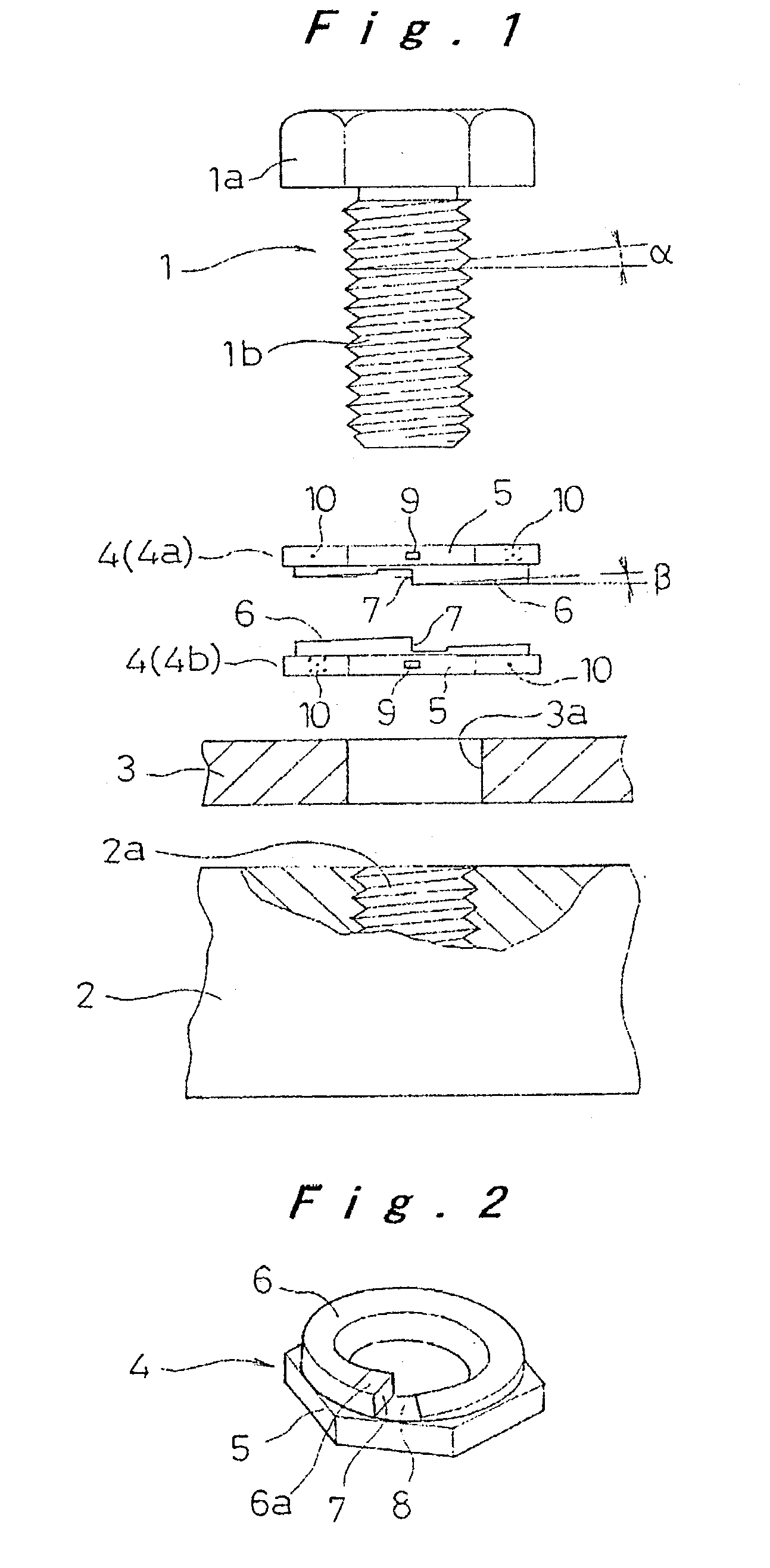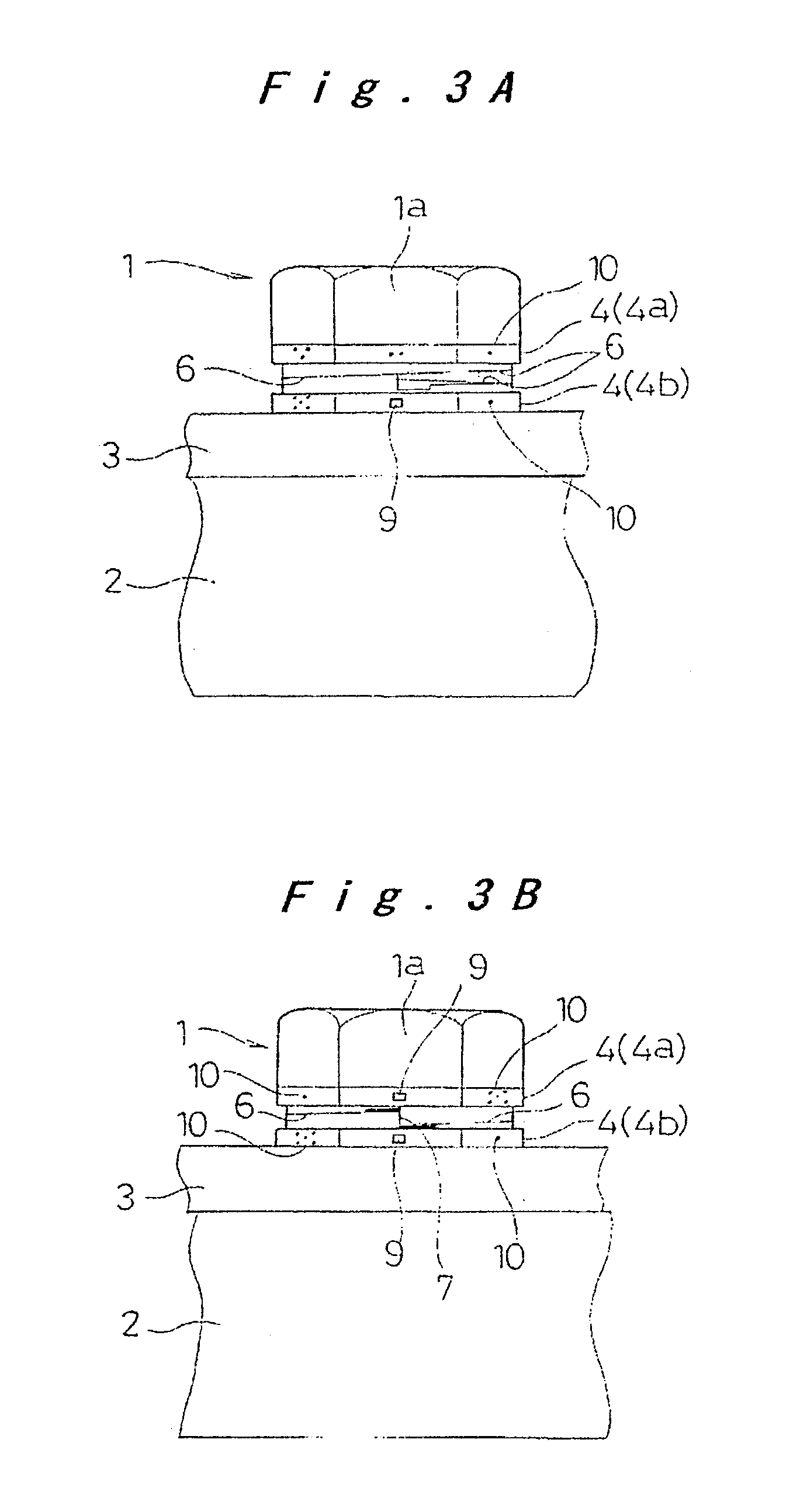Screw mechanism
a screw mechanism and screw technology, applied in the direction of screws, fastening means, washers, etc., can solve the problems of increasing weight, low reliability of the tightening state, and inability to ensure that the tightening axial force actually applied to the bolt conforms to the designed value, etc., to achieve easy and surely, strong tightening force, easy and surely
- Summary
- Abstract
- Description
- Claims
- Application Information
AI Technical Summary
Benefits of technology
Problems solved by technology
Method used
Image
Examples
first embodiment
[0070]a screw mechanism and a tightening method of the present invention will be described in the following, with reference to FIG. 1 to FIG. 5.
[0071]In FIG. 1 to FIG. 4, reference numeral 1 denotes a male screw member consisting of a bolt, reference numeral 2 denotes a female screw member consisting of a construction member that has a female screw 2a formed thereinside. In this embodiment indicated is a case in which a member 3 to be tightened is arranged on top of this construction member 2, and tightened and fixed to the female screw member (construction member) 2, by making the male screw member 1 penetrate through a bolt hole 3a formed on the member 3 to be tightened.
[0072]The male screw member 1 has a hexagonal head portion 1a and a male screw 1b, and a pair of washers 4 (4a, 4b) of the same construction are interposed between this head portion 1a and the member 3 to be tightened in a mutually upside-down direction, in a state of being fitted to the outer circumference of the ...
second embodiment
[0083]the present invention is described in the following, with reference to FIG. 6. In the above-mentioned embodiment, an example was indicated that used the male screw member 1 having the head portion 1a, and the female screw 2a was formed on the construction member to form the female screw member 2. However in this embodiment, it is constituted so that a male screw member 11 is embedded and fixed to a construction member 2, and a member 3 to be tightened is arranged on top of the construction member 2, by making the male screw member 11 inserted through a bolt hole 3a formed on the member 3 to be tightened to tightened this member 3 to be tightened with a nut member 12 acting as a female screw member. In this case, the same action and effect with the above-mentioned embodiment is also performed, by making a pair of washers 4 (4a, 4b) be interposed between the nut member 12 and the member 3 to be tightened.
[0084]In this embodiment, an example of a case in which the male screw memb...
fourth embodiment
[0086]the present invention is described in the following, with reference to FIG. 8. In the above-mentioned embodiment, an example was shown with the washer 4 being formed to a deformed-member-form the same form as the head portion 1a of the male screw member 1. In other words, the seat portion 5 was formed in a polygon form. In this embodiment, the washer 14 is provided with a seat portion 15 of disc form with non-slip-means such as knurls formed on the circumference, and made so that the interval between the tier faces 7, 7 can be made a random angle, without being restricted by the polygon shape. A graduation 16 is also formed on the outer circumference along one direction of the inclined direction, starting from the formed position of the tier face 7. This enables an easy perception of the interval size when configuring the interval between the tier faces 7, 7, and makes it possible to configure the desired tightening force.
[0087]It is preferred that this pair of washers 14 (14a...
PUM
 Login to View More
Login to View More Abstract
Description
Claims
Application Information
 Login to View More
Login to View More - R&D
- Intellectual Property
- Life Sciences
- Materials
- Tech Scout
- Unparalleled Data Quality
- Higher Quality Content
- 60% Fewer Hallucinations
Browse by: Latest US Patents, China's latest patents, Technical Efficacy Thesaurus, Application Domain, Technology Topic, Popular Technical Reports.
© 2025 PatSnap. All rights reserved.Legal|Privacy policy|Modern Slavery Act Transparency Statement|Sitemap|About US| Contact US: help@patsnap.com



